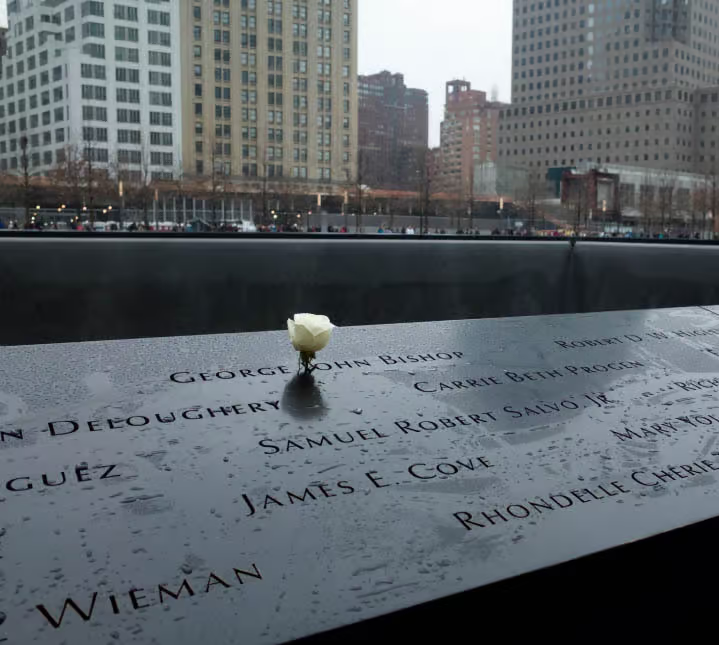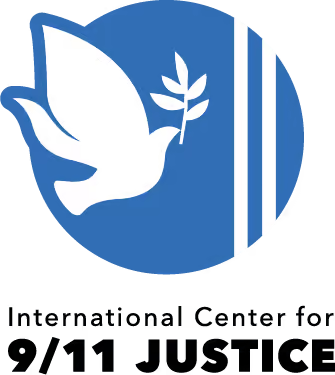Alija Izetbegovic is elected leader of Bosnia, which is still a republic within the nation of Yugoslavia. He wins the vote because Muslims have a plurality of about 40 percent in the republic. During World War II, Izetbegovic supported the Handzar divisions organized by the Nazi SS. After the war, he was sentenced to three years in prison for his wartime activities. He wrote a controversial Islamic manifesto in 1970 entitled “The Islamic Declaration.” [New York Times, 10/20/2003] In it, he called for “political revolution” and wrote, “There can be no peace or harmony between the ‘Islamic religion’ and non-Islamic social and political institutions.” He also wrote, “Our objective is the Islamization of Muslims” and “Our motto is to have faith and fight.” [Schindler, 2007, pp. 45] In 1983, the Communist government of Yugoslavia sentenced him to 14-years in prison on charges of conspiring to create a Muslim state, however he was released in 1988. The New York Times will later say that the “Muslims of Bosnia were overwhelmingly a secular people. [But] in his strong religious faith, Mr. Izetbegovic was the exception rather than the rule.” He win remain the leader of the Bosnian Muslims through the rest of the 1990s. [New York Times, 10/20/2003]
Late 1990s: British Intelligence Does Not Stop Possible Future 7/7 Bombings Mastermind from Recruiting for Al-Qaeda in London
Haroon Rashid Aswat is a radical Muslim of Indian descent but born and raised in Britain. Around 1995, when he was about 21 years old, he left Britain and attended militant training camps in Pakistan and Afghanistan. He is said to have later told investigators that he once served as a bodyguard for Osama bin Laden. In the late 1990s, he returns to Britain and becomes a “highly public aide” to radical London imam Abu Hamza al-Masri. Reda Hassaine, an informant for the French and British intelligence services (see After March 1997 and Late January 1999), will later recall regularly seeing Aswat at the Finsbury Park mosque where Abu Hamza preaches. Hassaine frequently sees Aswat recruiting young men to join al-Qaeda. “Inside the mosque he would sit with the new recruits telling them about life after death and the obligation of every Muslim to do the jihad against the unbelievers. All the talk was about killing in order to go to paradise and get the 72 virgins.” Aswat also shows potential recruits videos of the militants fighting in Bosnia and Chechnya. Hassaine will add: “He was always wearing Afghan or combat clothes. In the evening he offered some tea to the people who would sit with him to listen to the heroic action of the mujaheddin before joining the cleric for the finishing touch of brainwashing. The British didn’t seem to understand how dangerous these people were.” Hassaine presumably tells his British handlers about Aswat, as he is regularly reporting about activities as the mosque around this time, but the British take no action. [Sunday Times (London), 7/31/2005] It will later be reported that Aswat is the mastermind of the 7/7 London bombings (see Late June-July 7, 2005). Some of the 7/7 suicide bombers regularly attended the Finsbury Park mosque, and may have been recruited by al-Qaeda there or at another mosque in Britain. Counterterrorism expert John Loftus will later claim that Aswat in fact was working with British intelligence. He will say that in the late 1990s British intelligence was trying to get Islamist militants to fight in Kosovo against the Serbians and Aswat was part of this recruitment effort (see July 29, 2005). [Fox News, 7/29/2005]
1991: Portion of Saudi Multimillionaire’s BMI Investment Pays for Hamas Attacks
In 1991, Saudi multimillionaire Yassin al-Qadi transfers $820,000 from a Swiss bank account to the Quranic Literacy Institute, a Muslim charity based in Chicago. The charity uses the money to purchase land in Woodridge, a quiet town on the outskirts of Chicago. Al-Qadi claims the money is an interest-free loan for charitable purposes, but in a June 1998 affidavit, FBI agent Robert Wright will claim the investment is designed to produce money for Middle East terrorism. According to the affidavit, most of about $110,000 in income generated from the Woodridge property goes to Mohammad Salah, an admitted operative of Hamas. Salah is said to give $96,000 of this money to another Hamas operative to buy automatic rifles, pistols, and ammunition. In March 1992, al-Qadi will send an additional $27,000 directly to Salah. The institute will sell the Woodridge property for more than they had paid for it, but they will never repay al-Qadi’s $820,000. [Wall Street Journal, 11/26/2002] In June 1998, the US will seize the Quranic Literacy Institute’s assets (see June 9, 1998). In 2004, a US court will rule that the money from al-Qadi’s original investment was used to fund a Hamas attack in 1996 that killed a US citizen (see May 12, 2000-December 9, 2004). [Wall Street Journal, 11/26/2002]
1991: Philippines Senate Votes to Close US Bases
The Philippines Senate votes to close all US military bases in the country, a major strategic blow to the US in the region. [South Asia Analysis Group, 2/28/2002]
Early 1990s and After: Mysterious Links Seen between Right Wing Westerners and Philippine Muslim Militants
In 2002, a Philippine newspaper article will claim that “Philippine police have long been aware of operational ties between local Islamic radicals and right-wing foreigners.” Apparently these ties become first noticeable in the early 1990s. The article is mainly about a 1996 recorded testimonial by Edwin Angeles, a Philippine undercover agent who had posed as a leader of the Philippine militant group Abu Sayyaf until 1995 (see 1991-Early February 1995). In his testimony, he claimed to have attended meetings between Muslim militants and Oklahoma City bomber Terry Nichols, plus another right-wing American named John Lepney (see Late 1992-Early 1993 and Late 1994). The article notes that Philippine officials believe such ties were not limited to these cases. “Why the strange alliance exists remains a puzzle to police and military intelligence agents. A senior counterterrorism expert says commerce and short-term goals could account for the unusual ties. ‘Eventually, they’ll be killing each other. But for now, they seem to be working together.’” Lepney had been seen in the rebellious areas of the southern Philippines since 1990 and occasionally boasted of his rebel ties. [Manila Times, 4/26/2002] Additionally, Michael Meiring, a US citizen who may have been a CIA operative with ties to Muslim militant leaders (see May 16, 2002) and December 2, 2004), periodically appeared in the same region beginning in 1992 (see 1992-1993). He sometimes stayed in Davao City, the same city where Lepney was based. Meiring claims to be a treasure hunter, but military officials note that there are “terrorists and intelligence operatives of all stripes about among treasure hunters’ circles.” Meiring also had ties to at least one neo-Nazi figure in the US. [Manila Times, 5/30/2002; Manila Times, 5/31/2002] Philippine officials will later identify a number of other suspicious right-wing Westerners living in the rebellious southern region of the country in the early 1990s. For instance, there is US citizen Nina North, whom acquaintances claim has CIA connections. From 1990 to 1992, she was reportedly working on business deals with bin Laden and other Middle East figures involving the transfer of gold bullion. In 2002, Philippine officials will claim that ties between right-wing Westerners and Muslim militants continue to the present day but they do not provide new information because of ongoing investigations. [Manila Times, 5/31/2002]
1991: Al-Qaeda Begins Infiltrating Balkans Region Through Charity Front
A 2006 analysis compiled jointly by US and Croatian intelligence will reveal that
al-Qaeda began infiltrating the Balkans region even before the start of the Bosnian war in 1992. Kamer Eddine Kherbane, a member of Algerian militant group GIA, moved to Zagreb, Croatia, in 1991 to set up a charity front at the direct request of Osama bin Laden. The organization, called Maktab al-Khidamat (MAK) or Al-Kifah, is closely tied to al-Qaeda. Its Brooklyn, New York, branch called the Al-Kifah Refugee Center is tied to both the 1993 WTC bombers and the CIA (see 1986-1993). [Associated Press, 4/17/2006] Apparently the Zagreb branch of MAK/Al-Kifah is also called the Al-Kifah Refugee Center like the Brooklyn branch and has very close ties with that branch (see Early 1990s). A Spanish police report will later claim that Kherbane is the head of the Zagreb branch. [CNN, 12/8/2002] The analysis will allege that Kherbane used Al-Kifah “to infiltrate GIA members into Bosnia,” and that Iran and unnamed Arab countries paid for the operation through money transfers. [Associated Press, 4/17/2006] Kherbane appears to have begun working with other radical militants in Bosnia in 1990 (see 1990).
Between 1991 and 2001: NORAD Exercise Simulates Crash into Famous US Building
At some point between 1991 and 2001, a regional NORAD sector holds an exercise simulating a foreign hijacked airliner crashing into a prominent building in the United States, the identity of which is classified. According to military officials, the building is not the World Trade Center or the Pentagon. The exercise involves some flying of military aircraft, plus a “command post exercise” where communication procedures are rehearsed in an office environment. [CNN, 4/19/2004]
1991: White House Is Protected from Airplane Attack During Gulf War
Time magazine reports in 1994, “During the Gulf War, uniformed air-defense teams could be seen patrolling the top floor [of the White House] with automatic rifles or shoulder-mounted ground-to-air missiles.” [Time, 9/26/1994] While a battery of surface-to-air-missiles remains permanently on the roof of the White House, the rest of these defenses are apparently removed after the war is over. [Daily Telegraph, 9/16/2001] Yet even though counterterrorism officials later call the alerts in the summer of 2001 “the most urgent in decades,” similar defensive measures will apparently not be taken. [US Congress, 9/18/2002]
1991: Algerian Army Helps Create Al-Qaeda Linked Militant Group
Mohammed Samraoui, the Algerian army’s deputy chief counterintelligence specialist, will later desert in disgust and explain in a French trial that the Algerian army helped create the Groupe Islamique Armé (GIA), supposedly an Islamist militant group linked to al-Qaeda fighting the Algerian government. He will say that in the months before an Algerian army coup in January 1992 the Algerian army “created the GIA” in an attempt to weaken and destroy the Islamic Salvation Front (FIS), an Islamist political party poised to take power in elections. He will say, “We established a list of the most dangerous people and demanded their arrest, but in vain: they were needed [to be free] to create terrorist groups. Instead, we arrested right, left, and center. We were trying to radicalize the movement.” Army intelligence identified Algerians returning from the Soviet-Afghan war and many times recruited them. “They all took the flight home via Tunis because it was half-price. As soon as they landed in Algiers, we took them in hand.” [Randal, 2005, pp. 169-170]
1991: Private Security Report Indicates WTC Is Terrorist Target
During the mid-1980s, a series of reports described the vulnerability of the World Trade Center to terrorist attack (see July 1985)(see November 1985)(see (Mid-1986)). Now, because of the increased risk of terrorism against the US due to the Gulf War, the New York Port Authority hires private security company Burns and Roe Securacom to prepare a further report, and tells them that the WTC is a terrorist target. Unlike previous investigators, Burns and Roe Securacom finds that the center’s shopping and pedestrian areas, rather than the underground parking garage, are the most likely targets. [New York County Supreme Court, 1/20/2004; New York Times, 10/27/2005] After separating from Burns and Roe, Securacom (later called Stratesec) will become one of a number of firms involved in providing security at the WTC, right up to the day of 9/11 (see October 1996). [Progressive Populist, 3/1/2003]


